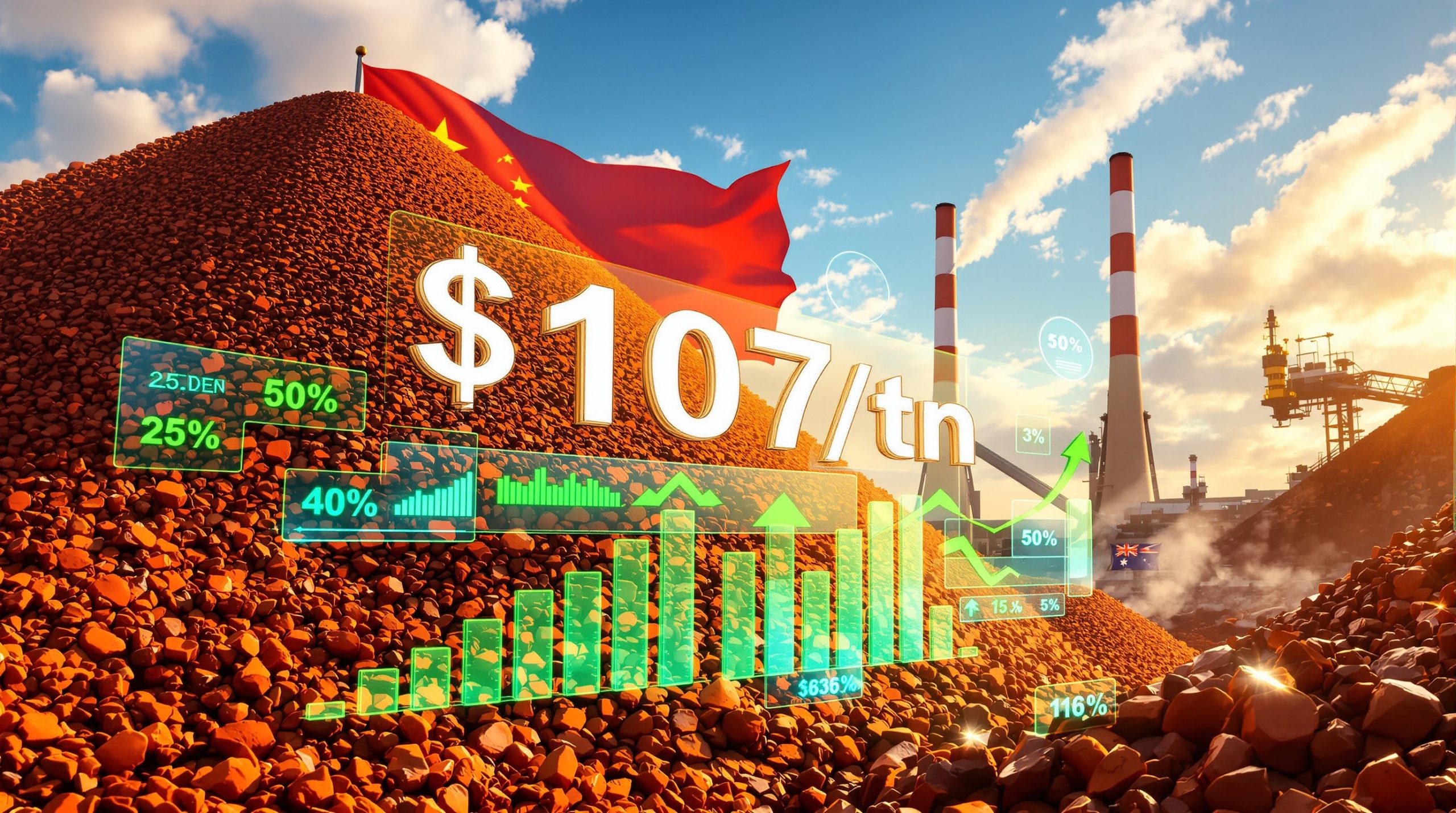Understanding the Unique Investment Landscape of Helium Markets
The helium investment opportunity represents a fascinating convergence of technological advancement and resource scarcity that few investors fully comprehend. Unlike traditional commodities, helium possesses irreplaceable properties that make it essential for cutting-edge technologies while simultaneously being a finite, non-renewable resource extracted primarily as a byproduct of natural gas operations.
The global helium market has undergone a dramatic transformation in recent years, shifting from government-controlled distribution to commercial market dynamics. This transition creates compelling opportunities for investors who understand the underlying supply-demand fundamentals and can navigate the inherent volatility that characterizes specialty gas markets. Furthermore, exploring industry evolution trends provides valuable context for understanding broader resource market dynamics.
Critical Properties Driving Investment Interest
Helium's investment appeal stems from its unique physical characteristics that cannot be replicated by alternative materials. With an ultra-low boiling point of -268.9°C and complete chemical inertness, helium serves as the only practical solution for numerous high-tech applications. The semiconductor industry relies on helium atmospheres for chip manufacturing, while quantum computing systems require helium cooling to achieve the near-absolute-zero temperatures necessary for quantum coherence.
Medical applications, particularly MRI systems, depend entirely on liquid helium for superconducting magnet cooling. The aerospace sector utilises helium for rocket fuel pressurisation and leak detection, while emerging technologies continue expanding demand profiles across multiple industries. Additionally, understanding energy transition insights helps investors appreciate how helium fits into broader technological advancement narratives.
Market Dynamics Creating Investment Windows
Current market conditions present a classic contrarian investment scenario. After experiencing significant price volatility following the completion of the U.S. Federal Helium Reserve liquidation, helium has transitioned from what industry insiders describe as a loved commodity to a hated commodity. This psychological shift often creates optimal entry points for sophisticated investors.
Global demand projections indicate sustained growth of 2.5% to 6.7% annually through 2034, driven primarily by expanding semiconductor manufacturing and emerging quantum computing applications. However, supply dynamics remain complex, with new production facilities creating temporary surplus conditions while long-term reserve depletion threatens future availability.
Current Helium Demand Distribution:
| Sector | 2025 Market Share | Projected 2030 Share | Primary Growth Driver |
|---|---|---|---|
| Semiconductors | 25% | 30%+ | AI chip manufacturing expansion |
| Medical/Healthcare | 20% | 22% | Global MRI system deployment |
| Aerospace | 15% | 18% | Commercial space industry growth |
| Quantum Computing | 5% | 12% | Quantum technology commercialisation |
| Other Industrial | 35% | 28% | Various specialised applications |
Investment Vehicles and Market Access Strategies
Helium investment opportunities span multiple asset classes and risk profiles, accommodating different investor preferences and capital allocation strategies. Understanding the various exposure methods enables more sophisticated portfolio construction approaches. Moreover, implementing appropriate volatility hedging strategies becomes crucial when navigating specialty commodity markets.
Direct Production Company Investments
Junior helium developers represent the highest risk-reward segment of the investment spectrum. These companies typically focus on high-grade helium assets with concentrations exceeding 10%, which industry analysis suggests as the threshold for optimal economic viability. Many junior producers employ modular production approaches that allow for scalable development as market conditions evolve.
Furthermore, effective junior mining strategies can provide valuable insights for evaluating smaller helium companies. Established helium producers offer more stable cash flow profiles while maintaining upside exposure to price appreciation. These companies often possess operational facilities, established customer relationships, and expansion-ready project pipelines that reduce execution risk compared to pure exploration plays.
Industrial Gas Conglomerate Exposure
Major industrial gas companies like Linde PLC, Air Products and Chemicals, and Chart Industries provide diversified helium exposure within broader gas portfolios. These entities control integrated value chains from extraction through distribution, offering stability but potentially limiting pure helium upside participation.
Investment Comparison Matrix:
| Investment Category | Risk Level | Return Potential | Market Liquidity | Capital Requirements |
|---|---|---|---|---|
| Junior Producers | High | Very High | Moderate | Lower threshold |
| Established Producers | Medium-High | High | High | Medium threshold |
| Industrial Gas Giants | Low-Medium | Moderate | Very High | Higher threshold |
| Private Partnerships | Very High | Potentially Exceptional | Very Low | Substantial |
Geographic Considerations and Regional Opportunities
Helium investment success often depends heavily on geographic positioning and regional market dynamics. Different producing regions offer distinct risk-reward profiles based on infrastructure availability, regulatory frameworks, and geological characteristics.
North American Production Advantages
The United States maintains significant advantages in helium production infrastructure and processing capabilities. Established pipeline networks and proximity to major industrial gas facilities reduce transportation costs and operational complexity. Canadian emerging projects benefit from similar infrastructure advantages while potentially offering earlier-stage value appreciation opportunities.
Regulatory environments in North America generally favour resource development, though environmental permitting requirements continue evolving. The transition from federal helium reserve management to commercial market dynamics creates new opportunities for private sector participation.
International Market Developments
Qatar dominates global helium production with approximately 25% of world supply, leveraging its massive natural gas operations to extract helium as a valuable byproduct. Qatari expansion plans could significantly impact global supply dynamics over the next decade.
Algeria represents another major production centre with growing export capabilities, while Australia hosts numerous development-stage projects that could materially impact Pacific Rim supply availability. Each region presents unique investment considerations regarding political stability, infrastructure development, and resource nationalism risks. Additionally, examining helium market analysis provides deeper strategic context for geographic positioning.
Strategic Location Assessment Factors
Successful helium investments require careful evaluation of several geographic factors:
- Processing infrastructure proximity reduces capital requirements and operational costs
- Transportation network access affects distribution economics and market reach
- Political stability and regulatory predictability influence long-term project viability
- Local industrial demand provides market security and pricing support
- Labor availability and technical expertise impact operational execution capability
Technical and Economic Evaluation Criteria
Helium project evaluation requires specialised knowledge of gas extraction and processing economics. Unlike traditional commodities, helium's value depends heavily on concentration levels, extraction complexity, and processing requirements.
Concentration Thresholds and Economic Viability
Helium concentration levels above 10% typically indicate economically viable deposits under current market conditions. Lower concentrations may become economic during high-price cycles but carry significantly higher operational risk during market downturns.
Reservoir characteristics significantly impact extraction economics. Depleted natural gas fields often provide excellent helium sources due to helium's tendency to accumulate in reservoir structures after lighter gases have been extracted.
Capital and Operating Cost Structures
Helium project economics depend critically on processing infrastructure requirements. Modular processing systems offer advantages for smaller-scale operations, allowing phased development approaches that match production capacity with market demand evolution.
Operating expenses typically focus on electricity costs for refrigeration systems, maintenance of cryogenic equipment, and transportation logistics. Projects located near existing natural gas processing facilities often enjoy substantial cost advantages through shared infrastructure utilisation.
Due Diligence Essential Elements:
- Helium concentration verification through independent reservoir analysis
- Processing infrastructure assessment and capital requirement evaluation
- Management team track record in gas sector operations
- Off-take agreement status or strategic partnership development
- Regulatory approval progress and permitting timeline clarity
- Funding adequacy relative to development capital needs
Risk Management and Investment Challenges
Helium investment opportunities carry unique risks that distinguish them from conventional commodity exposures. Understanding these risks enables more effective portfolio management and position sizing decisions.
Market Volatility and Cyclical Patterns
Helium markets exhibit significant cyclical volatility driven by supply-demand imbalances and industrial customer inventory management. Price cycles can be extreme, with helium experiencing both severe shortages and temporary oversupply conditions within relatively short timeframes.
The specialty nature of helium markets means that relatively small supply or demand changes can create disproportionate price impacts. New production facilities can temporarily flood markets, while unexpected supply disruptions can create severe shortage conditions.
Technical and Operational Risk Factors
Helium extraction and processing require specialised technical expertise and equipment. Cryogenic processing systems demand continuous maintenance and operational precision to maintain efficiency and safety standards.
Storage and transportation logistics present ongoing challenges, particularly for smaller-scale operations lacking integrated distribution networks. Helium's physical properties require specialised containment systems and handling procedures throughout the supply chain.
Regulatory and Geopolitical Considerations
Environmental regulations increasingly impact helium production, particularly regarding emissions and waste management from processing operations. Export restrictions in key producing nations could materially affect global supply availability and pricing dynamics.
Resource nationalism trends in various producing regions create long-term uncertainty regarding foreign investment access and profit repatriation capabilities.
Risk Mitigation Strategy: Diversification across multiple helium investments, including both junior producers and established industrial gas companies, helps manage sector-specific risks while maintaining meaningful upside exposure to market growth trends.
Technology Disruption and Demand Evolution
Emerging technologies create both opportunities and uncertainties for helium investment thesis development. Understanding technological trends enables more informed projections of future demand patterns and investment positioning strategies.
How is Quantum Computing Affecting Helium Demand?
The quantum computing sector represents perhaps the most significant emerging demand driver for helium consumption. Quantum systems require continuous helium cooling to maintain the ultra-low temperatures necessary for quantum coherence, creating sustained demand that scales directly with quantum computing deployment.
Current quantum computing helium demand remains relatively modest, but exponential growth projections suggest this sector could become a major consumption category within the next decade. Companies positioned to serve quantum computing customers may enjoy premium pricing and long-term contract opportunities.
Semiconductor Industry Evolution
Advanced semiconductor manufacturing continues expanding helium requirements as chip geometries shrink and production processes become more sophisticated. Artificial intelligence and machine learning applications drive increased demand for advanced semiconductors, indirectly supporting helium consumption growth.
Geographic shifts in semiconductor production, particularly efforts to onshore manufacturing in various regions, could create new helium demand centres and alter global distribution patterns.
Technology-Driven Demand Projections:
- Quantum computing helium demand: Potential 5x growth by 2030
- Semiconductor sector usage: 40% increase in helium consumption
- Space industry applications: 3x growth in helium requirements
- Medical technology expansion: Steady 15-20% growth in MRI-related demand
Strategic Investment Approaches and Portfolio Allocation
Successful helium investment strategies require balancing growth potential against volatility tolerance and capital allocation preferences. Different approaches serve varying investor objectives and risk profiles. Consequently, implementing comprehensive key investment strategies becomes essential for helium market participation.
Portfolio Construction Methodologies
Aggressive growth strategies typically allocate 60% of helium exposure to junior producers while maintaining 40% in established companies for stability. This approach maximises upside participation but requires strong volatility tolerance and careful position sizing.
Balanced approaches reverse these allocations, emphasising 60% established company exposure while maintaining 40% junior producer positions for growth potential. This strategy provides more stable returns with meaningful upside participation.
Conservative strategies limit junior producer exposure to 20% while emphasising 80% allocation to diversified industrial gas companies with helium exposure. This approach prioritises capital preservation while maintaining some participation in helium market growth.
Market Timing and Entry Strategies
Contrarian investing principles often apply effectively to helium markets, with optimal entry points frequently occurring during periods of market pessimism or temporary oversupply conditions. Dollar-cost averaging approaches can help manage timing risk while building positions during volatile periods.
Warrant and option strategies provide leveraged exposure for investors comfortable with derivative instruments. Many helium companies issue warrants as part of financing arrangements, creating additional upside participation opportunities.
Exit Strategy Development
Successful helium investing requires disciplined profit-taking strategies based on production milestones, market cycle positioning, and valuation metrics. Strategic acquisition potential represents a significant exit consideration, as consolidation trends may accelerate in the helium sector.
Market cycle timing remains crucial for position adjustments, with experienced investors often reducing exposure during euphoric periods while accumulating during pessimistic phases.
Investment Access Methods and Market Participation
Helium investment opportunities span public and private markets, accommodating different investor sophistication levels and capital requirements. Understanding access methods enables more effective investment implementation.
Public Market Opportunities
Listed helium companies provide the most accessible exposure for retail investors, offering liquidity and regulatory protection through established exchanges. These companies range from pure-play helium producers to diversified industrial gas operations with significant helium exposure.
Commodity-focused ETFs and mutual funds occasionally provide helium exposure through underlying holdings, though pure-play helium investment vehicles remain limited in public markets. However, exploring helium investment opportunities through specialised platforms can uncover additional market access options.
Private Investment Channels
Direct project participation opportunities occasionally arise for accredited investors, providing early-stage exposure to development projects with potentially exceptional returns. These investments typically require substantial minimum commitments and extended holding periods.
Private equity funds focused on energy infrastructure increasingly include helium projects within broader portfolio strategies. These vehicles offer professional management and diversification benefits but limit liquidity and require significant capital commitments.
Investment Access Summary by Investor Type:
- Retail investors: Public company stocks, sector ETFs, mutual funds with relevant exposure
- Accredited investors: Private placement opportunities, direct project participation
- Institutional investors: Large-scale project financing, infrastructure fund participation, joint venture opportunities
Future Market Evolution and Return Expectations
Long-term helium investment success depends on understanding evolving market dynamics, technological developments, and supply-demand fundamentals that will shape future returns.
Sustained Demand Growth Drivers
Global helium demand sustainability appears well-supported by multiple technological trends requiring specialised gas applications. Expanding semiconductor manufacturing, quantum computing commercialisation, and medical technology deployment provide diverse demand sources that reduce dependence on any single industry sector.
Emerging applications in advanced materials research, space exploration, and scientific instrumentation continue expanding the helium consumption profile beyond traditional industrial uses.
Supply Security Challenges
Long-term supply security concerns create potential helium investment opportunities as existing reserves face depletion pressures. New exploration and development projects become increasingly valuable as traditional supply sources mature or decline.
Geographic diversification of production sources reduces geopolitical supply risks while creating opportunities for projects in stable jurisdictions with favourable regulatory environments.
Strategic Positioning for Market Evolution
Successful helium investors increasingly focus on companies demonstrating operational excellence, strong management teams, and strategic positioning relative to major industrial customers. Technology integration and operational efficiency improvements provide competitive advantages in increasingly sophisticated markets.
Next-generation helium applications may create entirely new demand categories, rewarding investors positioned with companies capable of serving evolving customer requirements and technological specifications.
Investment Thesis: Helium represents a unique commodity investment opportunity where growing technological demand intersects with constrained supply, creating potential for significant returns for investors who understand market dynamics and select quality assets with proven management capabilities.
Historical Context and Learning Opportunities
The helium sector has experienced multiple cycles of boom and bust, providing valuable lessons for contemporary investors. Previous market cycles demonstrate the importance of patience, quality asset selection, and disciplined risk management in achieving superior long-term returns.
Industry veterans emphasise that successful helium investing requires understanding both technical fundamentals and market psychology, as sentiment swings often create the most attractive investment opportunities for prepared investors.
Understanding these market dynamics, combined with thorough due diligence and appropriate risk management, positions investors to capitalise on the unique opportunities presented by helium investment markets while managing the inherent challenges of specialty commodity exposure.
Exploring Opportunities in Small-Cap Helium Companies?
Discovery Alert's proprietary Discovery IQ model delivers real-time alerts on significant mineral discoveries across the ASX, instantly empowering subscribers to identify actionable opportunities ahead of the broader market. Understand why historic discoveries can generate substantial returns by visiting Discovery Alert's dedicated discoveries page, and begin your 30-day free trial today to secure your market-leading advantage.




